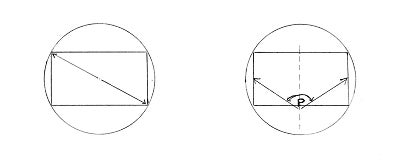Love them or hate them, fisheye lenses have a place in photography – albeit probably a minor one. Fisheye lenses also require a rethink when it comes to explaining their angles-of-view.
My last ‘blog looked at lens hoods and this one continues on that theme in part, looking at the unique properties that fisheye lenses possess. In particular, last time we looked at how the different angles-of-view provided by a lens across the different lengths of the sensor (short, long and diagonal measurements) affect the design of the lens hood used. Fisheye lenses deviate from that mathematical model for a fairly obvious reason, once you think about it.

The accompanying diagram (above) shows how the angle-of-view of a lens varies with the length over which the angle is captured. This is the theory that was used last week to explain the shape of lens hoods and it matches nicely the figures that lens manufacturers release for most lenses. But now think about fisheye lenses, where the diagonal angle-of-view is 180 degrees: to get that using the type of diagram shown would mean having a “flat” triangle, and if the triangle is flat then the angle-of-view should be 180 degrees across all lengths. That situation exists, but only for circular fisheye lenses where the picture is formed within a complete disc that sits entirely inside the edges of the sensor.
Full-frame fisheye lenses cheat by bending the image-forming-rays different amounts at different angles away from the lens axis. One way to imagine this is shown in the second diagram, below, where the diagonal angle-of-view, represented by the diagonal line, keeps the same “length” across the smaller width of the horizontal side of the sensor and is therefore pulled backwards to create an angle that is smaller than 180 degrees. In fact the angle works out to be 114 degrees.

So whereas a conventional lens has different angles-of-view across different lengths of the frame due to cropping from a fixed reference point, fisheye lenses exhibit different angles-of-view due to curvilinear distortion. This is also the cause of the characteristic curved-line distortion that fisheye lenses give, where the amount of curvature increases with the distance away from the centre of the image (and there is no curvature at all across the two axes of the image).





